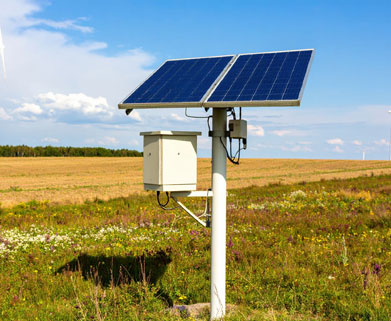Europe Solar PV Inverter Market Set to Surge: Transforming Renewable Energy Through Innovation and Government Support

The Solar PV Inverter Market in Europe is experiencing significant growth, fueled by the continent’s strong commitment to renewable energy and sustainability. In 2024, the market recorded sales of 2.32 million units, and this number is expected to nearly triple, reaching an impressive 6.74 million units by 2030. This growth is supported by a robust compound annual growth rate (CAGR) of 21.0%, showing the rapid adoption of solar technologies and the vital role that inverters play in energy conversion and management.
Government Support: The Growth Catalyst
One of the main drivers of this dynamic market is the range of government policies and incentives across Europe. Countries like Germany, France, Italy, and Spain have created supportive frameworks that lower the initial costs of solar PV systems and promote the use of efficient inverters.
Germany leads with programs like feed-in tariffs and investment tax credits, encouraging demand for flexible inverter solutions that serve both residential and commercial sectors. France and Italy focus on smart grid technologies and promote hybrid inverters, boosting integration of energy storage for better consumption. Spain’s emphasis on hybrid inverters with storage capabilities points to a strategic move toward energy independence and smarter solar solutions.
These policies effectively reduce initial costs, improve returns on investment, and create a positive environment for manufacturers and consumers. As subsidies shift from direct grants to long-term tax credits and financing options, the solar PV inverter market benefits from ongoing innovation and rising demand.
Addressing Market Challenges
Despite the promising growth, the market faces challenges such as the high initial costs of advanced, hybrid, and central inverters, which can affect adoption rates among residential and small commercial users. High costs for these inverters, especially hybrid and central types, remain a barrier. With prices ranging from $1,500 to over $100,000 for large systems, many small-scale and residential users encounter financial challenges. However, manufacturers are developing modular and cost-effective inverter solutions to balance performance and affordability.
Emerging Opportunities in Eastern Europe
Emerging markets in Poland, Hungary, and Romania are seeing increased residential solar adoption thanks to supportive policies, creating significant chances for market growth. These countries are transforming the solar landscape by encouraging residential solar uptake through subsidies, easier grid connections, and growing environmental awareness. Market players have the opportunity to introduce tailored inverter products to cater to these developing markets.
Segmental & Technological Landscape of Solar PV Inverters
The market segmentation shows a varied landscape of inverter types, each designed for specific applications and user needs. String inverters dominate with about 45% market share, preferred for their cost-effectiveness and suitability for residential and small commercial installations. Central inverters, making up 25%, cater to large-scale utility and industrial projects, leveraging economies of scale for maximum performance. Microinverters and hybrid inverters are rapidly gaining ground, each holding roughly 15% of the market.
Microinverters improve system reliability by managing output at the individual panel level, a crucial feature for setups with shading or complex roof arrangements. Hybrid inverters, essential for battery storage integration, support self-consumption and grid interaction, aligning with Europe’s expanding energy storage initiatives.
Technological trends highlight the integration of smart inverters with IoT capabilities, real-time monitoring, and enhanced grid compliance. These innovations maximize energy yield and empower users to actively participate in energy management, contributing to grid stability and sustainability goals.
Country-wise Market Highlights
Germany leads the European market with a 26% share, driven by its strong residential and utility-scale solar sectors. France, the UK, Italy, Spain, Poland, and Hungary also play significant roles in the evolving landscape. Germany, supported by strong government backing and a high adoption rate, controls over a quarter of the market share. France’s growing interest in hybrid inverters and the UK's use of microinverters show diverse strategies across Europe. Southern and Eastern Europe, including Italy, Spain, Poland, and Hungary, are rising markets driven by policy support and increasing consumer interest.
Future Outlook
With ongoing policy support, technological advances, and growing consumer awareness, the Europe Solar PV inverter market is positioned for substantial growth, making it an exciting area in Europe’s renewable energy shift. With an expected CAGR of 21.0% from 2024 to 2030, the market volume is set to rise from 2.32 million to 6.74 million units. This growth indicates a vibrant renewable energy future propelled by innovation, policy support, and expanding demand across European countries.